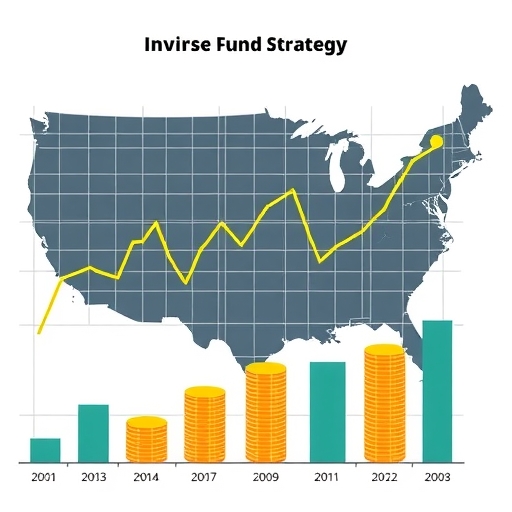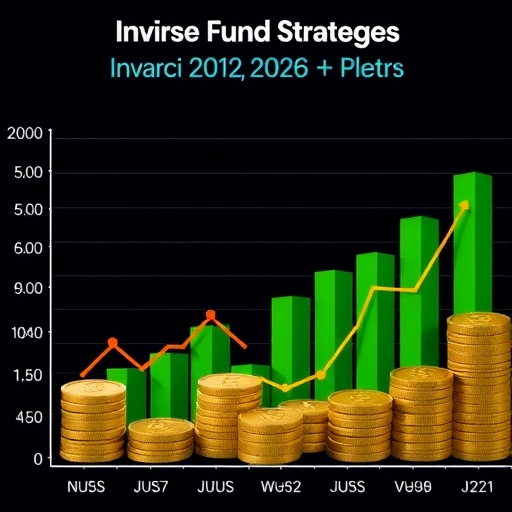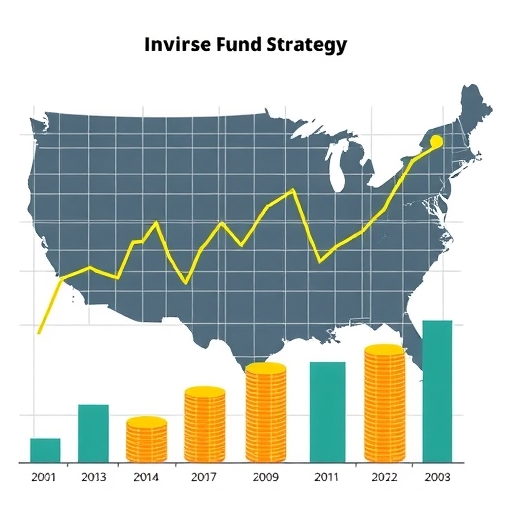Navigating the Currents: Understanding Inverse and Leveraged ETFs in Today’s Markets
Are you looking to understand how some specialized investment tools can help you navigate both rising and falling markets, or even amplify your returns? In today’s dynamic financial world, investors constantly seek innovative ways to capitalize on every market movement. While traditional investments generally thrive during upward trends, Inverse and Leveraged Exchange-Traded Funds (ETFs) offer unique, albeit complex, avenues to potentially profit from market downturns or significantly magnify returns. This article will delve into the intricate mechanics of these specialized products, explore the critical concept of “volatility drag,” examine sophisticated trading strategies, and highlight the crucial regulatory considerations that shape their availability and use worldwide.

We’ll break down how these funds are designed, discuss the inherent risks that make them unsuitable for long-term holding, and compare them to traditional strategies like short selling. By the end, you’ll have a clearer picture of when and how these powerful instruments can be tactically deployed, and why a deep understanding is paramount for any investor considering them.
The Core Mechanics: How Inverse and Leveraged ETFs Work (and Why They Don’t Always Deliver)
To truly grasp Inverse and Leveraged ETFs, we first need to understand their fundamental design. An Exchange-Traded Fund (ETF) is a type of investment fund traded on stock exchanges, much like a stock. However, inverse and leveraged ETFs are not your typical, passively managed funds that simply track an index. They are specialized financial instruments designed to achieve very specific, often short-term, objectives.
Understanding the different types of these specialized ETFs is crucial for grasping their varied objectives and risks.
| ETF Type | Objective | Leverage Example | Typical Use Case |
|---|---|---|---|
| Inverse ETF | Seeks to provide the opposite daily performance of an underlying index or asset. | -1x | Short-term hedging against anticipated market downturns. |
| Leveraged Long ETF | Seeks to provide magnified daily returns in the same direction as an underlying index or asset. | 2x, 3x | Aggressive, short-term speculation on market upturns. |
| Leveraged Inverse ETF | Seeks to provide magnified daily returns in the opposite direction of an underlying index or asset. | -2x, -3x | Aggressive, short-term speculation on market downturns. |
Inverse ETFs: Betting Against the Market
Imagine you believe the stock market, or a particular sector, is about to fall. Normally, you might sell your holdings or even engage in a complex strategy called short selling. But Inverse ETFs offer a simpler alternative. These funds are designed to deliver the opposite daily performance of a specific underlying benchmark index or asset. If the S&P 500 goes down by 1% today, a standard inverse S&P 500 ETF aims to go up by 1%.

How do they do this? They achieve their goal by using sophisticated financial contracts called derivatives, such as futures contracts, options, and swaps. These derivatives allow the fund to gain value when the underlying asset loses value. This means you can potentially profit from market declines without needing a margin account or engaging in direct short selling, offering a form of portfolio hedging against anticipated market downturns.
Leveraged ETFs: Amplifying Returns (and Risks)
If inverse ETFs aim for the opposite, Leveraged ETFs aim for amplified returns. These funds seek to provide magnified returns (e.g., 2x or 3x) in the same or opposite direction of their underlying asset’s daily movement. For instance, a 3x leveraged long ETF, like the ProShares UltraPro QQQ (TQQQ), aims to return three times the daily gain of its benchmark, the Nasdaq 100. Conversely, a 3x leveraged inverse ETF, such as the ProShares UltraPro Short QQQ (SQQQ), aims for three times the daily decline of the Nasdaq 100.

Like inverse ETFs, leveraged funds also use derivatives to achieve their magnified exposure. The key here is the word “daily.” Both inverse and leveraged ETFs undergo daily rebalancing. This means at the end of each trading day, the fund manager adjusts the derivatives to reset the leverage ratio back to its target (e.g., 2x, 3x, or -1x). While this rebalancing ensures the fund meets its daily objective, it introduces a critical phenomenon known as “volatility drag” or the “compounding effect.”
Understanding Volatility Drag and the Compounding Effect
Volatility drag is a fundamental structural characteristic of both inverse and leveraged ETFs. It means that over periods longer than one day, the returns of these funds can significantly diverge from the simple leveraged multiple of the underlying asset’s return. Why does this happen?

Consider a simple example: an underlying index starts at $100. On Day 1, it goes up 10% to $110. A 2x leveraged ETF would go up 20% to $120. On Day 2, the index falls 9.09% back to $100. The underlying index is back where it started. But what about the leveraged ETF? From $120, a 18.18% drop (2x 9.09%) would take it down to roughly $98.18. Even though the underlying asset is flat, the leveraged ETF has lost money over two days. This is volatility drag.
The drag is more pronounced with higher leverage and increased market volatility, often leading to performance decay over time. This makes these funds fundamentally unsuitable for long-term holding. We cannot stress this enough: these are not “buy and hold” investments. Their returns are unpredictable over longer periods, and they can erode capital rapidly, especially in choppy or sideways markets.
Several factors can intensify the effects of volatility drag and the compounding effect, making these ETFs even riskier for extended holding periods.
| Factor | Impact on Volatility Drag | Explanation |
|---|---|---|
| Higher Leverage | Increases drag significantly. | The more the returns are multiplied, the greater the daily rebalancing adjustment needed, leading to larger compounding errors over time. |
| Increased Market Volatility | Exacerbates drag. | Frequent large up and down movements in the underlying asset require more substantial daily adjustments, compounding losses. |
| Longer Holding Period | Accumulates drag over time. | The daily compounding effect, even small, adds up over multiple days, weeks, or months, leading to significant divergence from the underlying asset’s performance. |
| Sideways Markets | Pronounced drag. | Markets that move up and down repeatedly without a clear trend cause the daily rebalancing to consistently erode capital, even if the underlying asset finishes flat. |
Sophisticated Plays: Exploiting Leveraged ETF Decay and the Rise of “Double Short Hedged” Products
While inverse and leveraged ETFs are designed for short-term tactical plays, their inherent structural flaws – particularly volatility drag – have opened doors for even more sophisticated strategies. Some prominent investors have reportedly profited by actively shorting these very products.
The “Smart Money” Shorting Strategy
Renowned investors like Rob Arnott and David Einhorn have reportedly exploited the inherent performance decay of various leveraged and inverse ETFs. Their strategies often capitalize on the effects of volatility drag and/or operational inefficiencies of these products. By not rebalancing their short positions daily, they could potentially benefit as the leveraged or inverse ETF itself suffers from its daily reset mechanism in volatile markets. This highlights that for every investor looking to use these funds to gain, there are others looking to profit from their structural weaknesses.
The Emergence of “Double Short Hedged ETFs”
The financial market is always evolving, and we are now witnessing the introduction of highly complex instruments like “Double Short Hedged ETFs.” These products aim to simultaneously short both a leveraged long and a leveraged inverse ETF tracking the same underlying asset. For example, a “Double Short Hedged ETF” might short both a leveraged long MicroStrategy (MSTR) ETF (like MSTU) and a leveraged inverse MicroStrategy ETF (like MSTX or MSTZ).
The stated goal of these innovative products is to capture volatility drag while maintaining a market-neutral position to the underlying asset, in this case, MicroStrategy. By shorting both sides, the idea is to profit from the decay of *both* the leveraged long and leveraged inverse funds, without taking a direct directional bet on the underlying stock. This represents a new frontier in complex structured finance, attempting to arbitrage the inefficiencies of other complex products.
Expert Critique of New Complex ETFs
However, expert analysis suggests that the design of “Double Short Hedged ETFs,” intended to be market-neutral to their underlying asset through daily rebalancing, may inherently prevent them from benefiting from volatility drag as claimed. Instead, any gains might primarily stem from the operational difficulties or consistent underperformance of the underlying leveraged ETFs they short, rather than the pure volatility drag. This underscores the need for extreme caution and deep understanding when approaching these cutting-edge products, even for sophisticated investors.
Strategic Applications: Hedging Portfolios and Speculating on Market Shifts
Given their unique mechanics, inverse and leveraged ETFs are not for every investor, nor every situation. However, for those with a clear understanding of their risks and limitations, they offer distinct strategic applications for navigating market dynamics.
Key considerations when planning to deploy inverse or leveraged ETFs:
- Identify a clear, short-term market conviction, whether bullish or bearish.
- Determine the precise underlying asset or index you wish to track or bet against.
- Set clear entry and exit points for your position to manage potential losses and lock in gains.
Short-Term Portfolio Hedging
One of the primary benefits of Inverse ETFs is their accessibility for short-term portfolio hedging. If you anticipate a brief market downturn or believe a specific sector you hold is vulnerable to a correction, an inverse ETF can offer a convenient way to mitigate potential losses. Instead of selling off your entire portfolio, you can purchase an inverse ETF to offset some of the expected decline. This allows you to maintain your long-term positions while temporarily protecting against short-term volatility. For example, if you hold a broad portfolio and expect a market dip, buying a ProShares Short S&P 500 (SH) could help cushion the blow.
The appeal here is the ease of access. You don’t need a margin account, which is typically required for traditional short selling, nor do you need to deal directly with complex derivatives. Your maximum potential loss is limited to the capital you invest in the inverse ETF, offering a defined risk profile compared to the potentially unlimited losses of direct short selling.
Active, Short-Term Speculation
Beyond hedging, both inverse and leveraged ETFs are widely used for active, short-term speculation. Traders who have a strong, short-term conviction about the direction of a market or an asset can use these funds to amplify their bets. If you believe the Nasdaq 100 will have a strong up day, a 3x leveraged long ETF like TQQQ might be appealing. Conversely, if you foresee a significant daily decline, SQQQ could be considered.
This speculative use requires constant monitoring and a willingness to quickly adjust positions. The daily rebalancing and volatility drag effects mean that holding these funds for more than a few days can lead to unexpected and often disappointing results, even if your long-term directional call is correct.
Inverse ETFs vs. Traditional Short Selling
It’s important to understand how inverse ETFs compare to traditional short selling, as both allow investors to profit from falling prices. While they share a goal, their mechanics and risk profiles differ significantly:
| Feature | Inverse ETFs | Traditional Short Selling |
|---|---|---|
| Mechanism | Uses derivatives (futures, options, swaps) to track inverse daily performance. | Borrowing shares and selling them, hoping to buy back cheaper later. |
| Account Type | Standard brokerage account (though some brokers have restrictions). | Requires a margin account. |
| Maximum Loss | Limited to the capital invested in the ETF. | Potentially unlimited (if the stock price rises indefinitely). |
| Ease of Access | Generally easier for retail investors; no borrowing shares needed. | More complex; involves borrowing shares, paying interest, potential for “short squeezes.” |
| Time Horizon | Designed for very short-term (daily) holding. | Can be held longer, but still involves ongoing costs and risks. |
| Volatility Drag | Significant risk due to daily rebalancing. | Not directly affected by this phenomenon. |
As you can see, Inverse ETFs offer a simplified and lower-risk alternative to traditional short selling, providing retail investors with accessible tools for short-term portfolio hedging and speculation without the complexities of margin accounts.
The Regulatory Divide: Global Access Versus Regional Restrictions on Inverse ETFs
While inverse and leveraged ETFs are widely available in many international markets, their availability and accessibility can vary significantly across different regions due to varying regulatory stances. This highlights a crucial aspect of these complex financial instruments: regulatory bodies often prioritize investor protection and market stability over offering every conceivable investment product.
Widespread Availability in Key Markets
In regions like the United States and Canada, for example, inverse and leveraged ETFs are readily available to retail investors. You can find a wide array of these products tracking major indices like the S&P 500 and Nasdaq 100, as well as specific commodities like crude oil and even cryptocurrencies like Bitcoin. Examples include BetaPro and Global X funds in Canada, offering inverse and leveraged exposure to the S&P 500 (SPXI.TO, SPXD.TO), TSX 60 (CNDI.TO, CNDD.TO), and Crude Oil (HOD), along with Global X BetaPro Inverse Bitcoin ETF (BITI).
This availability often reflects a regulatory philosophy that assumes investors, especially those with access to brokerage accounts, have a certain level of financial literacy and can assess the risks involved. However, even in these markets, regulators like the Securities and Exchange Commission (SEC) continuously monitor these products and issue warnings about their suitability, particularly for long-term investors.
Strict Prohibition in Other Regions: The Case of India
In stark contrast, other countries maintain a much stricter stance. India’s Securities and Exchange Board of India (SEBI) explicitly prohibits inverse and leveraged ETFs for retail investors. This prohibition stems from significant concerns regarding several key areas:
- Market Stability: SEBI worries about the potential for these highly volatile instruments to destabilize the market, especially during periods of extreme price movements.
- Investor Protection: The complexity of derivative-based instruments, combined with the compounding effect and volatility drag, makes these products very difficult for the average retail investor to understand and manage. SEBI aims to protect investors from products that carry a high potential for rapid and significant losses.
- Suitability for Retail Investors: Given their short-term nature and the expertise required for their effective use, regulators in India deem these funds unsuitable for the investment goals and risk appetites of most retail investors.
This regulatory divide underscores the global debate surrounding complex structured financial products. While some argue for broader market access and investor freedom, others prioritize safeguarding unsophisticated investors from instruments that could lead to substantial financial harm. The continuous evolution and increasing complexity of such products necessitate enhanced financial literacy and robust regulatory oversight to protect both individual investors and overall market integrity.
Essential Considerations for Investors: Risks, Costs, and Tactical Deployment
Before you consider engaging with inverse and leveraged ETFs, it is absolutely essential to understand the significant risks and practical considerations involved. These are not passive investments; they require active management and a deep appreciation of their unique characteristics.
Key Risks for Investors
As we’ve discussed, these ETFs carry substantial risks that can lead to rapid capital erosion. Here’s a summary of what you need to be aware of:
- High Volatility and Potential for Rapid Losses: By design, leveraged ETFs amplify market movements, meaning both gains and losses are magnified. Inverse ETFs also carry high volatility as they react opposite to market trends.
- Volatility Drag and Compounding Effect: This is perhaps the most critical risk. Due to daily rebalancing, returns over periods longer than a single day can significantly underperform the stated leverage multiple. This effect is exacerbated by higher volatility and can lead to consistent performance decay over time.
- Tracking Error: These funds might not perfectly achieve their stated daily objectives due to various factors, including the costs of managing derivatives, market liquidity, and operational challenges. This “tracking error” can erode returns.
- Higher Expense Ratios: Managing complex derivative portfolios is more expensive than managing traditional index funds. Consequently, inverse and leveraged ETFs typically have significantly higher expense ratios, which eat into your returns.
- Unsuitability for Long-Term Holding: We cannot emphasize this enough. The daily reset mechanism and volatility drag make these funds fundamentally unsuitable for long-term investment strategies. Holding them for weeks, months, or years will likely lead to unpredictable and often decaying returns, even if your long-term directional prediction is correct.
- Liquidity Risk: Some inverse or leveraged ETFs, especially those tracking niche markets, might have lower trading volume, making it harder to buy or sell shares at desirable prices.
- Counterparty Risk: Since these ETFs use derivatives, there’s a risk that the counterparty to the derivative contract might default on its obligations, though this is often mitigated by the fund’s structure.
- Regulatory Risk: Changes in regulations can impact the availability, structure, or even the existence of certain inverse and leveraged products.
Costs and Tactical Deployment
Beyond the inherent risks, you must also consider the costs and the specific scenarios where these funds might be appropriate:
- Elevated Expense Ratios: Always check the expense ratio. The costs associated with managing the complex derivatives and daily rebalancing contribute to these funds being more expensive than traditional ETFs.
- Short-Term, Tactical Use Only: These funds are strictly for short-term, tactical positions. They are tools for active traders and sophisticated investors to express a very short-term view on market direction or to implement a brief hedging strategy.
- Active Monitoring Required: If you use these products, you must actively monitor your positions. Market conditions can change rapidly, and the effects of volatility drag can quickly erode your capital if left unchecked.
- Understanding the Underlying Asset: Always understand what the ETF is tracking. Whether it’s the Nasdaq 100, S&P 500, Crude Oil, or a specific company like MicroStrategy (MSTR), your success with the inverse or leveraged ETF is directly tied to your accurate prediction of that underlying asset’s short-term movement.
The recent influx of billions into leveraged ETFs, often influenced by significant macroeconomic events like evolving tariff policies or Federal Reserve interest rate decisions, underscores heightened speculative trading. This trend highlights both the appeal and the inherent dangers of these products when used without extreme caution. Observed operational challenges within existing leveraged ETFs, such as difficulties in consistently maintaining their target leverage ratios, provide exploitable opportunities for sophisticated trading strategies but pose additional risks for everyday investors.
Conclusion: Navigating the Complexities of Specialized ETFs
Inverse and Leveraged ETFs are powerful, albeit highly specialized, financial instruments that offer distinct opportunities for navigating market volatility and executing targeted investment strategies. While they provide accessible avenues for short-term hedging and speculation, their inherent complexities—particularly the daily rebalancing mechanism and susceptibility to volatility drag—demand a profound understanding and a disciplined, active management approach.
We’ve seen how these funds utilize derivatives to achieve magnified or inverse daily returns, how they differ fundamentally from traditional investments, and why volatility drag makes them unsuitable for long-term holding. We’ve also explored advanced strategies employed by seasoned investors and the diverse regulatory landscape that governs their availability, emphasizing the critical importance of investor protection in markets like India.
As financial innovation continues to introduce even more intricate products, investors must prioritize thorough due diligence and align these tools strictly with short-term tactical objectives, acknowledging their fundamental unsuitability for passive, long-term portfolio holdings. Always remember that knowledge is your greatest asset in the financial markets, especially when dealing with complex instruments designed for daily performance.
Disclaimer: This article is for informational and educational purposes only and does not constitute financial advice. Investing in inverse and leveraged ETFs carries significant risks, including the potential loss of principal. Always consult with a qualified financial professional before making any investment decisions.
Frequently Asked Questions (FAQ)
Q: What is “volatility drag” and why is it important for inverse and leveraged ETFs?
A: Volatility drag, also known as the compounding effect, is a phenomenon where the daily rebalancing of inverse and leveraged ETFs causes their returns over periods longer than one day to significantly diverge from the simple leveraged multiple of the underlying asset’s return. This erosion of value is more pronounced in volatile or sideways markets and makes these funds generally unsuitable for long-term holding, leading to potential performance decay.
Q: Are inverse and leveraged ETFs suitable for long-term investment strategies?
A: No, inverse and leveraged ETFs are explicitly designed for very short-term (typically daily) tactical use. Due to the effects of daily rebalancing and volatility drag, holding these funds for periods longer than a single day can lead to unpredictable and often significantly underperforming results, even if your long-term directional prediction for the underlying asset is correct. They are not “buy and hold” investments.
Q: Why are these types of ETFs restricted or prohibited in some countries?
A: Regulatory bodies in some countries, like India’s SEBI, restrict or prohibit inverse and leveraged ETFs for retail investors primarily due to concerns about market stability, investor protection, and their suitability for the average retail investor. The complexity of these derivative-based products, coupled with their high volatility and the potential for rapid, significant losses from volatility drag, makes them difficult for many to understand and manage effectively, leading regulators to prioritize safeguarding unsophisticated investors.



No responses yet